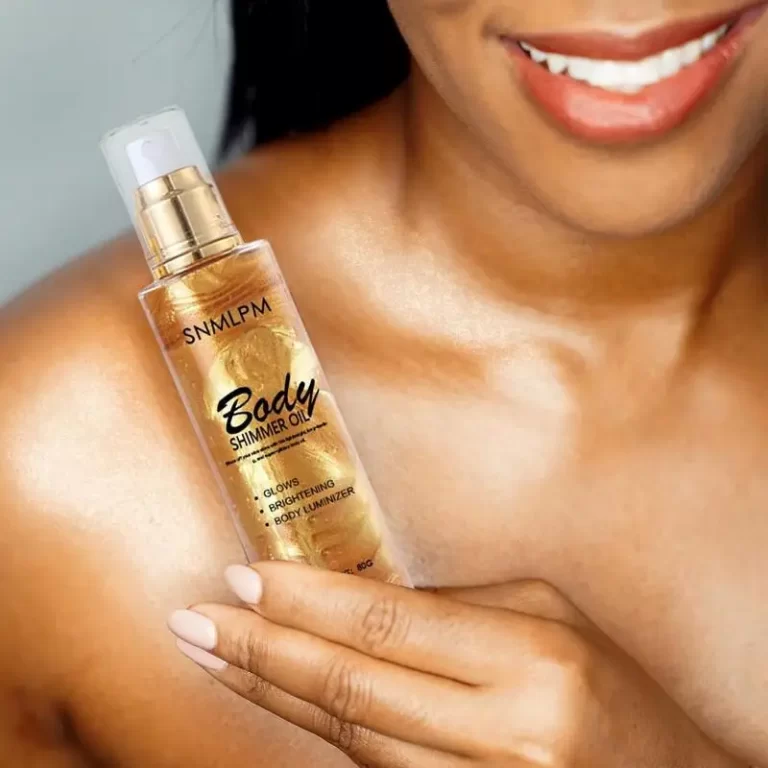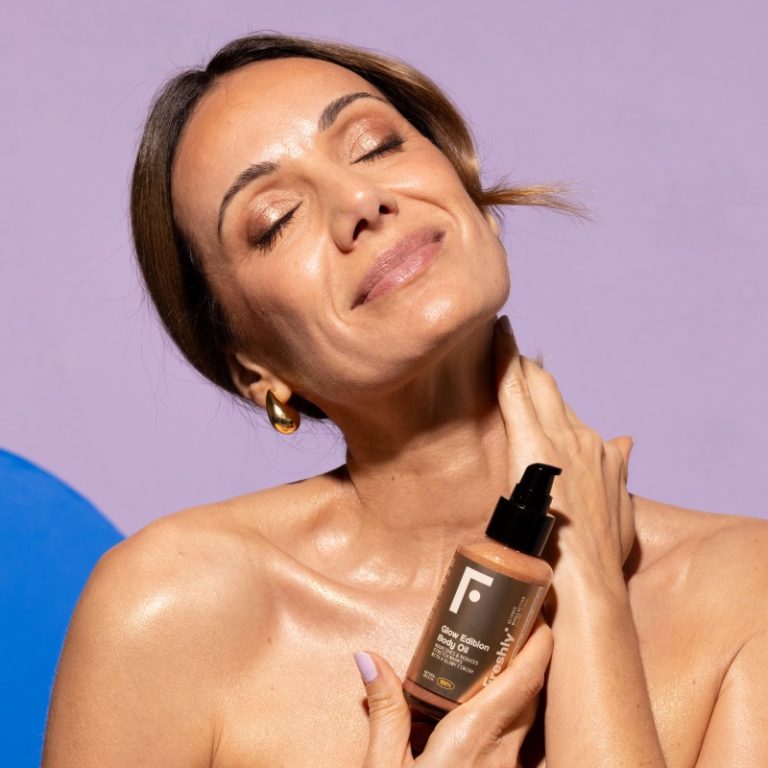
Dry Body Oil: Nourish Your Skin Effortlessly
Dry Body Oil vs. Regular Body Oil: What’s the Difference
Dry body oil offers a unique approach to skin hydration. It absorbs quickly into the skin without leaving a greasy residue. The term “dry” refers to the oil’s finish, not its composition. These oils typically contain a blend of lightweight, fast-absorbing oils. Common ingredients include grapeseed, jojoba, and argan oil. Manufacturers often add silicone-based ingredients to enhance the dry feel. Dry body oils provide intense moisture without the heavy feeling of traditional oils.
They suit all skin types, particularly those prone to oiliness. The quick absorption makes dry body oil ideal for busy lifestyles. Users can apply the oil and dress immediately without waiting. Dry body oils often come in spray or pump bottles for easy application. They offer a convenient alternative to traditional lotions and creams.
Benefits of Using Dry Body Oil
Dry body oil provides numerous advantages for skin health and appearance. It delivers deep hydration without clogging pores. The lightweight formula allows skin to breathe while nourishing it. Dry body oils often contain antioxidants that protect skin from environmental damage. They can help reduce the appearance of fine lines and wrinkles. Many formulas improve skin elasticity, promoting a more youthful appearance. Dry body oils create a subtle, healthy sheen on the skin.
They can help even out skin tone and texture over time. The fast absorption makes dry body oil suitable for all seasons. It won’t feel heavy or sticky in hot weather. Many users report a reduction in skin dryness and flakiness with regular use. Dry body oils often offer aromatherapeutic benefits through essential oils. They can help soothe and relax the mind while nourishing the body.
Unlock the Secrets: How to Select the Perfect Dry Body Oil
Selecting the perfect dry body oil requires consideration of several factors. Start by identifying your skin type and specific concerns. Dry skin benefits from oils rich in fatty acids like argan or marula oil. Oily or acne-prone skin suits lighter oils such as grapeseed or jojoba. Consider any skin sensitivities or allergies when reviewing ingredients. Fragrance-free options work well for those with sensitive skin. Look for oils with added vitamins and antioxidants for extra skincare benefits.
Consider the packaging and application method that suits your lifestyle. Spray bottles offer quick, even application for large areas. Pump bottles provide more control for targeted application. Read reviews to understand the oil’s texture and absorption rate. Some oils dry faster than others, which may influence your choice. Consider your budget, as dry body oils range from affordable to luxury price points. Look for multi-purpose formulas if you want to use the oil on both body and hair. Choose oils with UV protection for added benefits during sun exposure.
Master the Art of Applying Dry Body Oil Like a Pro
Proper application maximizes the benefits of dry body oil. Start with clean, slightly damp skin for optimal absorption. Shake the bottle well before use to mix any settled ingredients. Dispense a small amount of oil into your palm. Warm the oil between your hands before applying. Use long, sweeping motions to distribute the oil evenly across your body. Pay extra attention to dry areas like elbows, knees, and feet.
For spray formulas, hold the bottle about 6 inches from your skin. Spray evenly and use your hands to rub in any excess. Apply to the ends of your hair for added shine and moisture. Use on cuticles and hands for a quick moisture boost. Layer under sunscreen for added hydration during sun exposure. Reapply throughout the day as needed, especially to dry areas. Use after showering or bathing to lock in moisture. Experiment with mixing dry body oil into your regular lotion for a custom blend.
Most Popular Ingredients in Dry Body Oils
Dry body oils contain a variety of nourishing ingredients. Grapeseed oil features prominently for its lightweight, fast-absorbing properties. Jojoba oil closely mimics the skin’s natural sebum, making it suitable for all skin types. Argan oil provides intense moisture and anti-aging benefits. Marula oil offers high antioxidant content and quick absorption. Rosehip oil helps improve skin texture and reduce scars. Camellia oil nourishes the skin while providing a silky finish. Sunflower seed oil delivers vitamin E and helps maintain the skin barrier.
Squalane, derived from olives, hydrates without clogging pores. Coconut oil, when fractionated, becomes lightweight and fast-absorbing. Avocado oil provides deep moisture for very dry skin. Manufacturers often include silicone derivatives for a dry, silky feel. Essential oils add fragrance and additional skincare benefits. Vitamin E acts as a preservative and provides antioxidant protection. Some formulas include peptides or retinol for anti-aging effects.
Battle of the Moisturizers: Comparing Dry Body Oil to Others
Dry body oil offers unique benefits compared to traditional moisturizers. It absorbs faster than creams or lotions, leaving no sticky residue. The oil penetrates deeper into the skin, providing long-lasting hydration. Dry body oils often feel lighter on the skin than traditional body butters. They don’t interfere with perspiration, making them ideal for active lifestyles. Dry oils can be easily layered under other skincare products.
They work well in all seasons, unlike heavy creams that feel uncomfortable in summer. Dry body oils often offer a more concentrated formula than lotions. A little goes a long way, potentially making them more economical. They typically contain fewer preservatives than water-based moisturizers. Dry oils can multitask as hair and nail treatments. They often provide a subtle glow to the skin, enhancing its appearance. However, very dry skin might need the extra emollience of a cream. Understanding these differences helps in choosing the right product for specific needs.
Unleash Your Creativity: DIY Recipes for Dry Body Oil
Creating custom dry body oil at home allows for personalization. Start with a base of fast-absorbing oils like grapeseed or jojoba. Add a small amount of argan or marula oil for extra nourishment. Include a few drops of vitamin E oil as a natural preservative. Essential oils provide custom scents and additional benefits. Lavender soothes, while citrus energizes. Use about 10-15 drops of essential oil per ounce of base oil.
Rosemary or peppermint oil can provide a cooling effect. Add a small amount of mica powder for a subtle shimmer. Mix the ingredients in a dark glass bottle to protect from light degradation. A roller ball bottle allows for easy application. Shake well before each use to mix the ingredients. Store in a cool, dry place and use within 6 months. Experiment with different oil combinations to find your perfect blend. Consider adding dried herbs or flowers for visual appeal. Label the bottle with ingredients and date of creation.
Dry Body Oils in Professional Skincare
Spas and skincare professionals increasingly incorporate dry body oils. Massage therapists use them for their smooth glide and quick absorption. Facialists apply dry oils as the final step in treatments. This locks in moisture without leaving a heavy residue. Nail technicians use dry oils to nourish cuticles and soften hands. Many professional skincare lines now include dry body oils in their range. These products often feature high-end, exotic ingredients.
Some spas offer custom-blended dry oils for a personalized experience. Dry oils feature in body wraps and exfoliation treatments. They help nourish the skin after procedures like microdermabrasion. Tanning salons use dry oils to enhance and prolong a sun-kissed glow. Makeup artists incorporate dry oils for a dewy, luminous skin finish. The versatility of dry body oils makes them a staple in professional skincare kits.
Environmental and Ethical Considerations in Dry Body Oil Production
The production of dry body oils raises several environmental and ethical concerns. Sustainable sourcing of plant oils becomes increasingly important. Palm oil, used in some formulations, contributes to deforestation. Responsible brands use certified sustainable palm oil or alternatives. The use of synthetic ingredients may impact aquatic ecosystems. Many brands now focus on biodegradable, natural formulations. Packaging presents another environmental challenge. Eco-friendly brands use recycled or recyclable materials. Some offer refillable options to reduce plastic waste. Animal testing remains a concern in the beauty industry.
Many dry body oil brands now carry cruelty-free certifications. Vegan formulas exclude animal-derived ingredients, appealing to ethical consumers. Fair trade practices ensure equitable treatment of ingredient producers. Transparency in the supply chain becomes crucial for conscious consumers. Water consumption in production processes raises sustainability questions. Some brands adopt water-saving measures in their manufacturing. These considerations shape the future of dry body oil production and consumption.
The Science Behind Dry Body Oils: How They Work
The efficacy of dry body oils stems from their unique formulation. These oils typically have a smaller molecular structure than traditional oils. This allows them to penetrate the skin more quickly and deeply. The addition of volatile silicones or esters contributes to the dry feel. These ingredients evaporate quickly, leaving only the nourishing oils behind. Dry oils often contain a high concentration of linoleic acid. This fatty acid helps strengthen the skin’s barrier function.
Some formulas include ingredients that mimic the skin’s natural lipids. This helps the oil integrate seamlessly with the skin’s structure. Antioxidants in dry oils neutralize free radicals, protecting skin from damage. Some dry oils contain ingredients that boost collagen production. This can help improve skin elasticity over time. The lack of water in the formula reduces the need for preservatives. This can make dry oils suitable for sensitive skin types. Understanding the science behind dry oils helps in appreciating their benefits.

Dry Body Oils for Different Skin Concerns
Dry body oils address various skin concerns beyond basic hydration. For mature skin, oils rich in antioxidants fight signs of aging. Rosehip oil, for example, can help reduce the appearance of fine lines. Acne-prone skin benefits from non-comedogenic oils like grapeseed. These moisturize without clogging pores or exacerbating breakouts. For hyperpigmentation, oils with vitamin C can help even skin tone. Dry, itchy skin finds relief with oils high in fatty acids. Eczema-prone skin may benefit from gentle, fragrance-free formulas.
Oils with anti-inflammatory properties soothe irritated or sensitive skin. For stretch marks, oils rich in vitamin E may help improve skin elasticity. Sun-damaged skin can benefit from oils with regenerative properties. Dull skin regains radiance with oils that promote cell turnover. Extremely dry skin benefits from richer oils like argan or marula. Combination skin finds balance with lightweight, fast-absorbing formulas. Understanding these targeted benefits helps in selecting the right dry body oil.
Seasonal Use of Dry Body Oils
Dry body oils adapt well to changing seasons. In summer, their lightweight texture prevents a heavy, sticky feeling. They absorb quickly, making them ideal for use before outdoor activities. Many summer formulas include natural sun protection ingredients. Winter calls for richer dry oils to combat cold-induced dryness. Layering dry oil under lotion provides extra protection against harsh weather. Spring formulas often feature fresh, floral scents.
They help nourish skin as it emerges from winter’s dryness. Fall dry oils might incorporate warming scents like cinnamon or vanilla. They provide a comforting sensory experience as temperatures drop. Some brands offer seasonal limited editions of their dry oils. These might feature ingredients particularly suited to that time of year. Year-round use of dry body oil maintains consistent skin hydration. Adjusting the amount used helps tailor the product to seasonal needs. Understanding seasonal skin changes helps maximize the benefits of dry body oil.
The Future of Dry Body Oils: Innovations and Predictions
The dry body oil market continues to evolve with new innovations. Smart formulas that adapt to individual skin chemistry emerge. These create a custom hydration level for each user. Multifunctional products combine dry oil with other skincare benefits. These might include ingredients for firming or cellulite reduction. Sustainable packaging solutions gain traction in the industry. Refillable containers and plastic-free options become more common. Dry oils infused with CBD or other wellness ingredients gain popularity.
They combine skincare benefits with relaxation or pain relief. Personalized dry oil blending services emerge in high-end beauty retailers. Customers can create bespoke formulas tailored to their preferences. Biotechnology leads to new plant-based oil alternatives. These offer similar benefits with a smaller environmental footprint. Dry oils with color-adapting technology enhance the skin’s natural tone. Formulas with encapsulated ingredients provide time-released benefits. As consumer awareness grows, expect more emphasis on ethically sourced ingredients. The dry body oil market is poised for continued growth and innovation.



